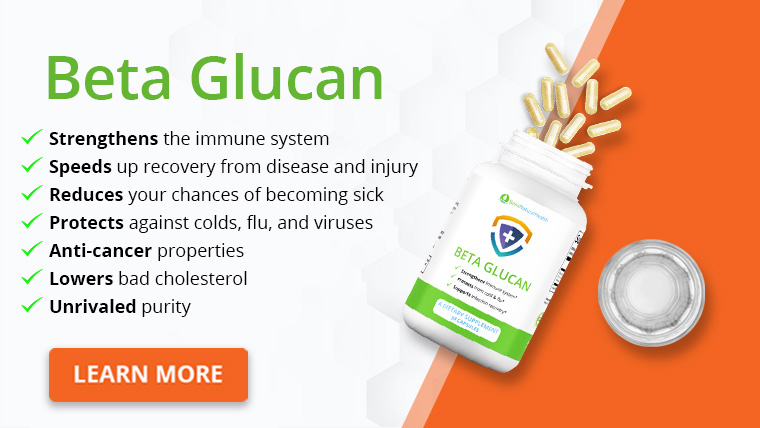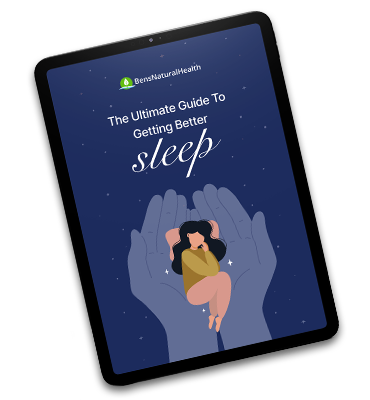Strep throat is a bacterial infection that can cause a sore throat, fever, swollen lymph nodes, and difficulty swallowing.
It is essential to visit a healthcare provider to get tested for strep throat and receive appropriate treatment.
Let’s dive deeper into strep throat’s symptoms, causes, and treatment. We also discuss FAQs and home remedies for strep throat.
What is strep throat?
Strep throat is a type of bacterial infection caused by group A Streptococcus bacteria, also known as Streptococcus pyogenes. This infection causes irritation and inflammation in the throat.
Group A strep bacteria are contagious and generally spread to others through respiratory droplets or direct contact.
It can also be transmitted environmentally, for example, through contact with contaminated objects, such as towels or bedding, or ingesting food from someone infected.
When infected people talk, cough, or sneeze, they spread respiratory droplets. As group A strep bacteria often live in the nose and throat they get people can get sick if they inhale respiratory droplets that contain the bacteria, come in contact with those droplets via their mouth or nose, or drink from the same glass or eat from the same plate as a person infected with group A strep bacteria.
People can also spread group A strep bacteria from infected sores on other people’s skin or when they touch sores or fluid from the sores on the skin caused by group A strep bacteria, such as impetigo. Strep bacteria may spread to the tonsils, sinuses, skin, blood, or middle ear.
Get Your FREE Sleep Guide
- Learn how to naturally improve your sleep
- Dietary recommendations, supplements, and lifestyle changes
- Developed exclusively by our medical doctor
Symptoms of strep throat
It is essential to seek medical attention if you suspect you have strep throat, as untreated strep throat can lead to more severe complications such as rheumatic fever or kidney problems.
Signs and symptoms of strep throat:
- Swollen tonsils
- Sore throat
- Difficulty swallowing
- Pain when swallowing
- Sore throat that can start very quickly and may look red
- White patches or streaks of pus on the tonsils
- Tiny, red spots on the roof of the mouth, called petechiae
- Tender lymph nodes on the sides of the neck
- Fever
- Fatigue
Rare strep throat symptoms:
- Headache
- Stomach pain
- Nausea or vomiting
- Rash (scarlet fever)
The following symptoms suggest a virus is the cause of the illness instead of strep throat:
- Cough
- Conjunctivitis or pink eye
- Runny nose
- Hoarseness
How quickly do symptoms of strep throat appear? Symptoms appear about 2 to 5 days after contact. They may be mild or severe and often start suddenly.
What causes strep throat?
Group A Streptococcus typically causes strep throat. This bacteria can lead to a sore throat, red and swollen tonsils with white spots, and a fever.
Group B Streptococcus, on the other hand, can cause blood infections, pneumonia, and meningitis in newborns and other conditions in adults, including urinary tract infections, skin infections, and pneumonia.
While group A Streptococcus is commonly responsible for strep throat, group B Streptococcus can cause other serious illnesses, particularly in newborns and older adults with health problems.
Anyone can get strep throat, but some factors can increase the risk of getting this common infection:
- Age: Strep throat is more common in children between 5 and 15 years than adults but infrequent in children younger than 3. Adults with an increased risk for strep throat include parents of school-aged children or those often in contact with children.
- Group settings: Close contact with another person with strep throat is the most common risk factor for illness, particularly in crowded environments such as schools or military training facilities.

Diagnosis
A doctor will determine your illness by asking about symptoms and doing a physical exam. For example, if they think you might have strep throat, they swab your throat to test for strep throat.
There are two types of tests: rapid strep tests and throat cultures.
Rapid strep tests
A swift diagnostic tool, the rapid strep test involves a throat swab to detect the presence of group A strep bacteria causing the patient’s symptoms.
A positive test result allows healthcare providers to prescribe antibiotics to treat the infection promptly.
However, in cases where the rapid strep test comes back negative while strep throat is still suspected, a throat culture swab may be taken.
Although it requires more time to produce results, a throat culture has a higher success rate in detecting infections that the rapid strep test could miss.
It is important to note that if a throat culture is required, the results may take one to two days to be received by the healthcare provider.
Throat culture testing
Throat culture testing is a crucial diagnostic tool recommended for children and teenagers who may develop rheumatic fever as a complication of untreated strep throat.
However, throat cultures are usually only necessary for adults in cases where the initial rapid strep test returns a negative result.
Generally, adults are not at significant risk of developing rheumatic fever after a strep throat infection.
Treating strep throat
Antibiotics
In strep throat cases, antibiotics are typically used as an effective treatment method. They can reduce illness duration, alleviate symptoms, prevent the spread of bacteria to other individuals, and prevent serious complications.
Healthcare providers may prescribe antibiotics to patients exhibiting strep throat symptoms to manage the infection and prevent complications promptly.
It is important to note that while strep throat is a bacterial infection, most sore throats are caused by viruses.
Other illnesses or conditions, such as the common cold, sinus infections, postnasal drip, acid reflux, smoking, or exposure to inhaled particles, can also trigger a sore throat.
However, antibiotics are only prescribed in cases where the strep test yields a positive result. Antibiotics prevent rare but severe health complications stemming from strep throat, such as rheumatic fever.
Typically, penicillin or amoxicillin are the first-line antibiotics prescribed. These antibiotics effectively kill the bacteria causing the infection and reduce the risk of complications.
If the patient is allergic, their healthcare provider may prescribe alternative antibiotics.
It is vital to adhere to the entire course of antibiotics as prescribed to ensure a complete recovery and prevent complications.
Someone with strep throat should start feeling better in a day or two after starting antibiotics. Call the doctor if you or your child are not feeling better after taking antibiotics for 48 hours.

Pain relief and increased fluids
In addition to antibiotics, the treatment of strep throat may include pain relievers and adequate fluid intake to alleviate symptoms.
Some individuals may experience tonsillitis, an inflammation of the tonsils, as part of their strep throat symptoms.
Signs and symptoms of tonsillitis include swollen tonsils, sore throat, difficulty swallowing, and tender lymph nodes on the sides of the neck.
Good hygiene
In addition to adhering to healthcare provider recommendations, good hygiene helps prevent the spread of group A streptococcus bacteria, which can cause strep throat.
Effective hygiene practices involve regularly washing hands, especially after coughing or sneezing, before meals or food preparation, and after contacting contaminated surfaces.
Individuals should also use a tissue when coughing or sneezing or cough or sneeze into their upper sleeve or elbow if a tissue is unavailable.
Used tissues should be disposed of immediately. Hands should be washed for at least 20 seconds with soap and warm water.
In situations where hand washing is not possible, it is recommended to use alcohol-based hand sanitizer.
It is essential to understand that having strep throat once does not protect against future exposures, meaning people can get strep throat more than once.
Although no vaccine is currently available to prevent strep throat, practicing good hygiene and adopting preventative measures can help protect oneself and others from contracting the infection.
7 home remedies for strep throat symptoms
1) Gargle with warm salt water
This can soothe a sore throat, reduce painful swelling, and kill bacteria in your mouth due to the antibacterial properties of salt.
Gargling and rinsing with warm salt water can also help ease the pain caused by tonsillitis.
2) Get plenty of rest
Sleep is crucial for your body’s fight off infection, so allow your body adequate rest to recover.
3) Stay hydrated
Drink enough water to keep a sore throat lubricated and relieve discomfort. That can also help flush toxins from your body, promoting a quicker recovery.
4) Use a humidifier
Adding moisture to the air can help soothe a dry or inflamed throat. That can also reduce irritation caused by allergies or pollution.
5) Honey and lemon tea
Honey has natural antibacterial properties, and lemon can help relieve congestion. Drinking a warm tea with honey and lemon can help soothe your throat and relieve symptoms.
6) Foods often used to ease symptoms
- Eucalyptus
- Ginger
- Garlic
- Peppermint
- Cinnamon
- Clove
7) Other things to try
- Sucking on throat lozenges, ice, or popsicles
- Eating soft foods like yogurt and applesauce
- Drinking cold liquids to help relieve throat soreness
While these home remedies can help alleviate strep throat symptoms, none can kill the bacteria causing the infection.
The most effective way to treat strep throat is with antibiotics prescribed by a doctor.

FAQs
Yes, strep throat is highly contagious. It can be spread through contact with an infected person’s saliva or nasal secretions, such as coughing or sneezing.
People with the infection are most contagious when they have symptoms, but they can also spread the bacteria even if they don’t have any symptoms.
Strep throat typically resolves within 3 to 7 days without treatment, but it’s important to note that getting treated with antibiotics can help reduce the risk of complications and speed up recovery.
If left untreated, strep throat can lead to severe complications such as rheumatic fever and kidney inflammation.
If you have strep throat symptoms, you must see a healthcare provider for a proper diagnosis and appropriate treatment.
Yes, but even though strep throat can go away on its own, it is not recommended to wait for it to resolve independently, as the infection can lead to severe complications if left untreated.
Yes, you can get strep throat twice. Although you may recover from a previous strep throat infection, it is still possible to contract the infection again.
That could happen if you come into close contact with an infected person, the group A streptococcus bacteria carrier, or contaminated surfaces.
Strep throat infections that keep coming back can be caused by different things. These include being around people who have this bacteria, having a weak immune system, or not handling food properly.
The bacteria that cause strep throat can spread easily and quickly. To minimize the risk of strep throat, practice good hygiene, such as frequently washing your hands, covering your mouth when coughing or sneezing, avoiding close contact with infected individuals, and ensuring proper food handling.
Yes, but it is improbable. Although uncommon, it is possible to get strep throat from oral sex if you come into contact with the group A streptococcus bacteria in an infected person’s genital area.
Yes, adults can get strep throat. While children may be more vulnerable due to frequent close contact with others, adults can also contract the infection.
The group A streptococcus bacteria that cause strep throat are highly contagious and can infect people of any age. Most adult cases of strep throat occur in those under 40.
Yes, but it is rare. While a sore throat is a common symptom of strep throat, some people may only experience other symptoms, such as fever, difficulty swallowing, swollen lymph nodes, and white patches on the tonsils.
If left untreated, strep throat can lead to severe complications such as rheumatic fever and kidney inflammation.
Rheumatic fever can cause painful and inflamed joints, heart valve damage, and permanent heart damage. Kidney inflammation can lead to kidney damage as well.
In some rare cases, untreated strep throat can result in serious infections such as abscesses in the tonsils or throat.
Therefore, it’s essential to see a healthcare provider for a proper diagnosis and appropriate treatment if you have symptoms of strep throat.
It usually takes 2 to 5 days for someone exposed to group A strep bacteria to become ill with strep throat and experience symptoms.
That period is known as the incubation period for strep throat. However, some people may develop symptoms within 24 hours of exposure, while others can take up to 7 days to show signs.
Conclusion
Strep throat is a bacterial infection caused by Group A Streptococcus (GAS) that causes symptoms such as swollen lymph nodes, difficulty swallowing, and sore throat.
Home remedies that help relieve strep throat symptoms include gargling warm salt water, getting plenty of rest, staying hydrated, using a humidifier, taking honey and lemon tea, and eating foods that ease symptoms.
Strep throat should naturally stop after some days, but if you face more than the usual symptoms, visit a healthcare provider to get tested for strep throat and receive appropriate treatment.
Explore More








